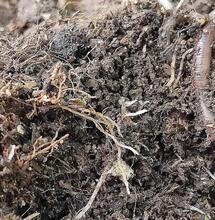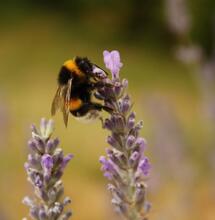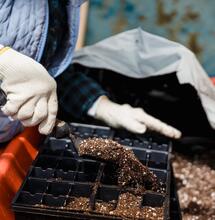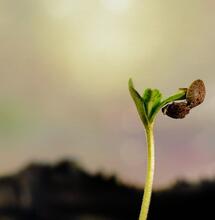Summer Cannabis Growing and Some of the Difficulties
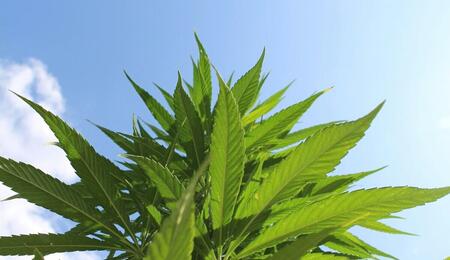
Summertime Cannabis gardens have a unique set of issues; this is the natural time for Cannabis growth to prepare for harvest in the fall. But summer heat might mean problems with the plant’s water intake, while not being able to grow outdoors pulls a whole other range of issues, such as unnecessary electricity spending. Scroll down and make sure you stay on top of your summer cannabis grow, despite the difficulties.
Normal Hydration in a Cannabis Plant During the Summer
Proper watering is of paramount importance when growing in higher temperatures. Although the summer heat may offer some resistance to over-watering, plants are at a higher risk for under-watering. Plants that are under-watered will start to droop but should recover quickly (usually within a few hours) once watered properly. If this happens, increase the frequency of waterings or volume of water added in order to prevent recurrence. Once a plant dehydrates to the point of terminal wilt, it will not recover. Under-watered plants are also particularly attractive to spider mites. During a heat wave, Cannabis plants may stall and wait for conditions to improve; a light shade cloth may be helpful in order to avoid this delay.
Droughts are most common in the summertime; fortunately, there are several water-saving methods that can help minimize the water demand of your garden. Water use in the garden can be reduced by either reclaiming (as in a recirculating system), by using passive hydroponics or by using water more judiciously - as in the case of ollas or drip systems. These techniques can be helpful in reducing water use and conserving resources.
Many hydroponic systems can be made into recirculating systems by feeding the drain back to the reservoir. Although it is common practice to dump and replace the nutrient solution occasionally, it does allow for the water to be reused more than a drain-to-waste system does.
Passive hydroponic systems can be used for outdoor water conservation. A reservoir of water supplies a wicking growth medium, which lifts the water to the plant roots.
Ollas and Drip Irrigation Systems
Ollas are an irrigation method used to slowly release water to plant roots. Their concept is simple and has been used for thousands of years in Mexico, China, India, Brazil, the Middle East, South Africa and Australia. An unglazed clay jug or pot, which is kept filled with water, is buried in the soil with the neck at ground level. Moisture becomes available as the water slowly seeps through the container wall.
Shallow-rooted plants benefit best from shallow ollas and more deeply-rooted plants prefer planted ollas that are planted deeper into the ground. Since most of the water is expressed at the root level and not on the surface, the topmost layer of soil is allowed to remain drier than via other watering methods, inhibiting weed growth, and a higher percentage of the water used is distributed to the plant root zone. A cover or lid slows evaporation and keeps insects from laying eggs in the water.
Drip systems are the modern equivalent to ollas; these release drips of water to the medium in order to maximize moisture exposure to the roots in range, while minimizing runoff. The amount of water can be regulated both by the frequency and duration of waterings but also by the emitters, which are rated for different flows.
When You Can’t Save on Electricity in the Summer
Ideally, summertime Cannabis should be grown using as much natural light as possible; unfortunately, this is not always possible. Artificial lighting for gardens in the summer is expensive, problematic and generally is a waste of resources. For example, in some cities in California, outdoor Cannabis gardens are prohibited - effectively prohibiting the use of free light as an alternative, despite the fact that California has a history of problems with rolling blackouts due to the increased demand for electricity for air conditioning use during the hottest months of summer (the last big blackout was in August 2020). As a result, area gardeners are forced to use indoor lighting and run cooling systems for that lighting during a time when electricity is at a premium.
If artificial lighting is used during the summer months, consider running the lights at nighttime when ambient temperatures are lower and waste heat is easier to dispose of. Solar-powered attic fans often come with a long cord between the panel and the fan, which can easily add a circulation boost during the hottest part of the day to a greenhouse, grow room or tent.
Mites Are More Likely to Attack Plants in the Summer
Spider mites in the summer and bud rot or caterpillars in the autumn are a few seasonal dangers that you may face, but each region is different, so it is important to educate yourself about your local climate’s challenges. In general, spider mites are an issue when it is dry and hot and certain types of mold are more of an issue when it is cold and wet. Over-watering leads to drowning, bugs breeding in your soil and fungal issues. Although it will not prevent all issues, the best defense against potential problems is to maintain continuously healthy plants and address problems quickly, before they spread.
Local Climates Have an Impact on Outdoor Growing
Of particular importance for outdoor growers is the first frost date. In areas where early frosts can damage fall harvests, begin covering outdoor plants (light deprivation) for twelve hours per day to trigger flowering before the natural equinox. By starting flowering early, the plants will finish early and, if timed correctly, before the killing frosts of winter. In areas with a very short growing season, light deprivation may be required for most of the flowering cycle. For areas with a very long growing season, a spring harvest may be possible with winter-grown, indoor-vegged plants.
Although growing seeds from around the world is exotic and fun, there should also be a place for semi-naturalized cultivars bred to preform well in a particular region. By simply selecting seed parents from the best performing plants, this adaptation can be encouraged; if done correctly, the lineage can even be improved - at least, for local purposes.
Although it is true that Americans spend an awful lot of money on growing vestigial fields of useless grass in the front and backs of our houses, it is not too late to return those spaces to functional use. For a similar investment in resources, that could be changed. It could be traded for the more sustainable and healthier tradition of flowers in the front for pollinators and for aesthetic purposes, and vegetables and Cannabis in the back for household use.
More from Soft Secrets:






